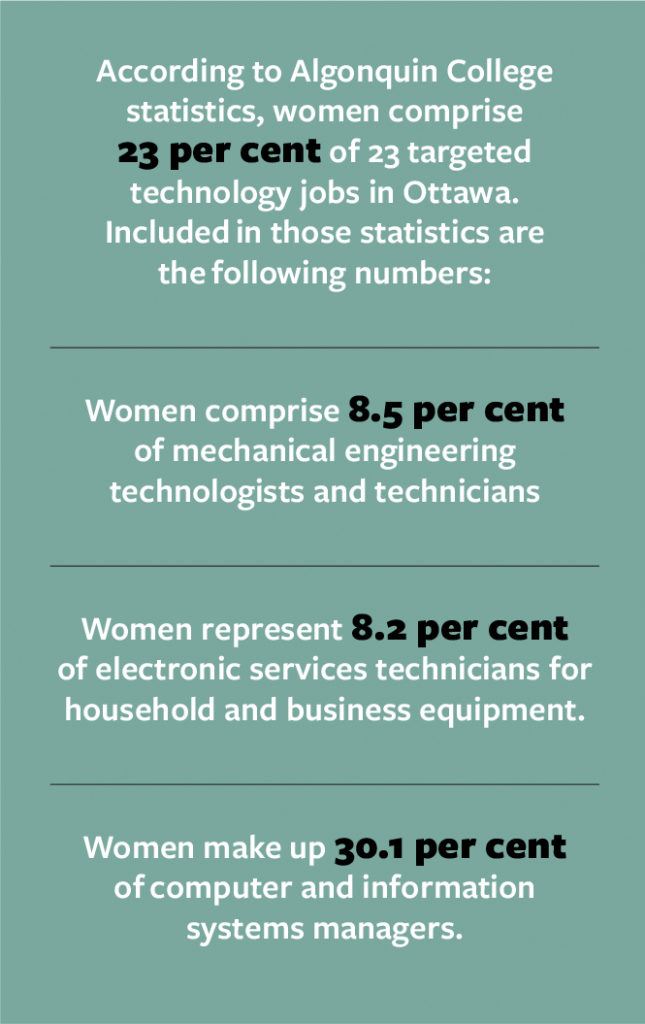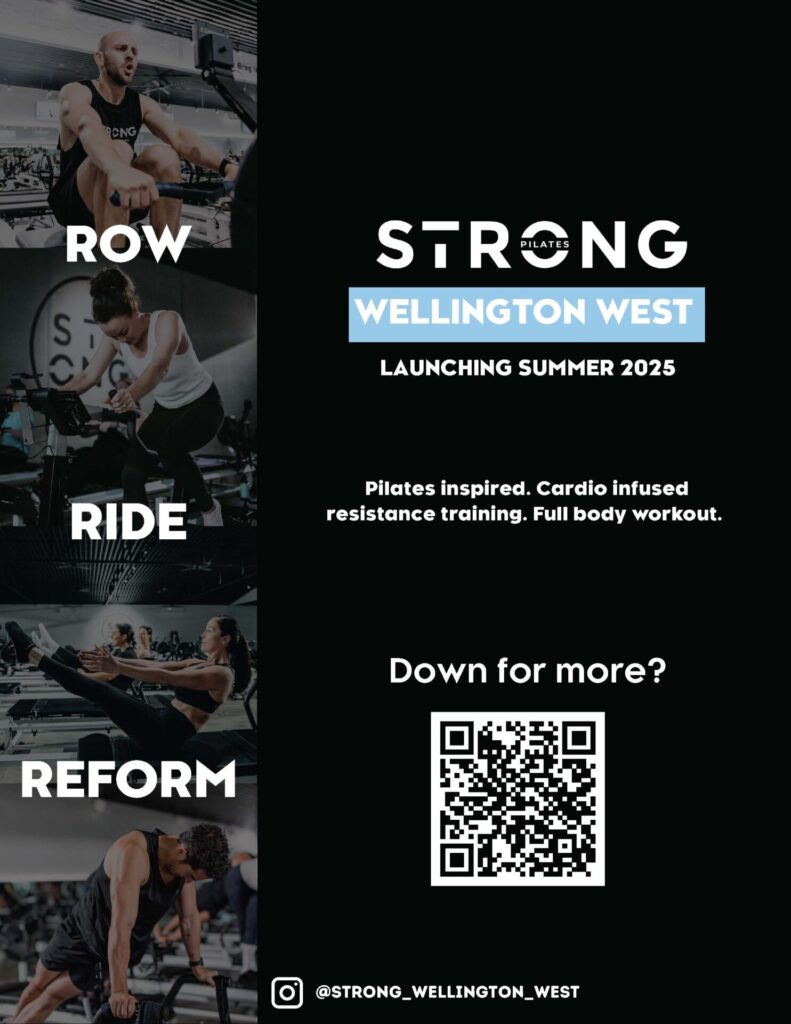Feature: Women in Stem – Progress, But More Needs to Be Done

By Jeff Buckstein
The progression of women into senior leadership roles, including half of the federal cabinet, has benefited Canada and the National Capital Region immensely.
Experts agree, however, that one key area where more women are needed is in the STEM [science, technology, engineering and mathematics] fields. Although there has been a slight improvement in the number of women enrolled in these subject areas, and graduates are enjoying successful careers, there is still a significant gender gap.
“Generally, more and more people are going to university these days, so much so that there is a shortage in the trades. There are also more women than men studying at university, but not in the STEM fields,” says Catherine Mavriplis, a professor in the department of mechanical engineering at the University of Ottawa.
“We have been trying to increase the percentage of women in STEM fields for years,” says Mavriplis.
The numbers are nuanced, with some subject areas doing better than others. For example, according to the Engineers Canada 2017 report, available online, biosystems engineering enrolment for female undergraduate students in Canada was at 47.5 per cent, and for chemical engineering it was at 39.3 per cent. As a growth percentage, bio-systems enrolment for female undergraduates has risen about 88 per cent since 2013. Female enrolment in computer science and software engineering are also on the upswing, with each registering close to a 125 per cent increase since 2013.
However, engineering physics, at 21.6 per cent female enrolment in 2017, electrical engineering at 15.3 per cent enrolment, and mechanical engineering, at 14.2 per cent enrolment, do not do well in that regard, according to statistics.
At Carleton University, in the fall of 2018, the aggregate figures for both graduate and undergraduate STEM programs showed 30.89 per cent female enrolment, and that compared to 29.08 per cent in 2013 and 27.37 per cent in 2008.
There was, however, significant improvement in engineering, as applications in that subject increased by eight per cent in 2018 over 2017, and the longer-term results are even better.
“Since 2015, female enrolment across all engineering and design programs – including both graduate and undergraduate, has increased by 26.5 per cent,” says Adam Landry, communications officer in Carleton’s faculty of engineering and design.
Amine Mire, an assistant professor of sociology at Carleton, says she has observed increasing numbers of women in STEM classes. Many of those students tend to be first-generation immigrants from families where educational achievement in the sciences is heavily promoted, such as from Iran, Syria, or Eastern Europe, among other countries, she notes.
There are concerted efforts across the city to enroll a higher percentage of women in the STEM areas.
Algonquin College has launched a three-year pilot project called We Saved You A Seat that reserves up to 30 per cent of classroom seats for qualified female students in science, engineering, technology and mathematics programs.
“Not only are we reducing isolation in the classroom by saving 30 per cent of the seats in four programs for qualified women, we are making systemic change by providing faculty training in gender inclusion, and forging industry connections with our mentoring program and scholarship opportunities,” says Sarah Gauen, an inclusion and diversity specialist in the college’s human resources department.
Technovation, a global program that has become very successful in Ottawa, is a four month program that teaches technology entrepreneurship for girls between the ages of 10 and 18.
“To date, 600 girls in Ottawa have completed the program. This year we have 160 participants in the English program and have just launched a French stream in partnership with La Cité Collegiale and Ottawa U with 35 girls participating. Over half the university-aged alumnae are in computer science or engineering now,” says Jennifer Francis, chair of the Capital Angel Network, and regional ambassador for Technovation Ottawa.
“I am encouraged by the growing number of women pursuing STEM as a career, but believe we can inspire even more women to enter these fields. Diversity and inclusion are proven multipliers to performance and economic growth, and critical success factors for global companies and organizations. This is something we must work on collectively as a society,” says Sonya Shorey, vice-president of marketing and communications with Invest Ottawa and Bayview Yards.
“It is essential to inspire and excite young girls about STEM opportunities. This must begin in elementary school (K-12) and carry through high school and post-secondary education,” she elaborates.
Shorey believes the increasing engagement of women in STEM programs and careers is attributable, in part, to the international spotlight on this opportunity, and collective, concrete action from many educational institutions, companies, governments, innovation hubs, mission-driven organizations and communities. This includes a critical mass of well-branded organizations around the world that are investing in diversity and inclusion, and making it a priority.
“When leaders champion this action, and put real investment behind it, change is accelerated,” she says.
Shorey has also served as a mentor over the past five years with the Mindtrust Leadership Development Program (MLDP) which serves the University of Ottawa, Carleton University, and Algonquin College.
MLDP was created in 2004 as a joint venture between Mindtrust, uOttawa’s Telfer School of Management and Carleton’s Sprott School of Business in an effort to promote leadership excellence. Students from the University of Ottawa, Carleton University and Algonquin College directly engage leaders of both genders in a host of professional fields, including business, science and technology.
This year 68 per cent of the university and college students that are participating in Mindtrust are women, says Shorey.
As these various academic initiatives come to fruition here in the NCR, as elsewhere, experts are optimistic that the gender gap in the STEM subjects will close, and the excellent leadership provided by women in so many fields in the business, not-for-profit and public sectors will be expanded even further.
Why aren’t more women pursuing a degree in STEM?
First, the good news. According to Statistics Canada, a higher percentage of women – 67 per cent – are graduating with university degrees than their male counterparts – 62 per cent. Now the not-so-good news, at least for the high-tech industry. These university-educated women are more likely to pursue a degree in business or social sciences than in Science, Technology, Engineering and Mathematics (STEM). In fact, says Statistics Canada, twice as many men as women – 40 per cent to 20 per cent – opt for a STEM degree.
So why aren’t more women pursuing a degree in STEM? And why aren’t more women looking for a career in Canada’s technology industry? Opinions vary. Some maintain it begins in school, that women simply aren’t interested in technology-related subjects. In both education and upbringing, they say, women are steered or guided in another direction. As for considering employment in the tech sector, many experts believe that women view high-tech as a male-oriented field, that they are intimidated – or at least dissuaded – by the low number of women now employed by tech companies.
Amy MacLeod, the Corporate Diversity Officer and Vice President of Strategic Communications at Mitel Networks Corporation, takes another view. “I was discussing this situation with an acquaintance at the University of Ottawa,” she recalls. “She thought a key factor might be the fact that women, more than men, like to see the results of their work. For example, technology that results in something like cleaner drinking water – a tangible, visible, and gratifying result – is more likely to appeal to women than working on important but more obscure software.”
A year ago, MacLeod drew on that thought as she helped shape Mitel’s push to create a more diverse and inclusive workplace. The Mitel approach recognizes the proven value of a diverse workplace, one in which age, gender, and ethnicity are viewed as strengths. But it goes a step further, focusing on outcomes rather than processes. “We want our employees – all of our employees – to see that what they do matters, that at the end of the day it makes a difference, she says, “That they make a difference.”
This emphasis on results is now company-wide, says MacLeod, and touches every part of the business. “We’re talking about this approach with everyone, from our R&D people to our hiring managers,” she says. “We’re also looking closely at our hiring practices, how we post our jobs, the language we use, and the message we send to potential employees.”
At the end of the day, she says, Mitel wants a collaborative climate in the workplace, where everyone participates and contributes. Where mentoring and shadowing are routinely available and widely employed. Where diversity is not only encouraged but appreciated and utilized.
“What we’re doing is the right thing,” says MacLeod. “The right thing for our business, our employees, our customers, and our future.”























